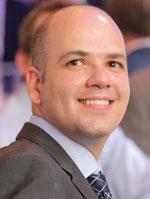
Bone marrow failure Bone marrow failure: A condition that occurs when the bone marrow stops making enough healthy blood cells. The most common of these rare diseases are aplastic anemia, myelodysplastic syndromes (MDS) and paroxysmal nocturnal hemoglobinuria (PNH). Bone marrow failure can be acquired (begin any time in life) or can be… is a serious condition that occurs when the bone marrow bone marrow: The soft, spongy tissue inside most bones. Blood cells are formed in the bone marrow. stops making enough healthy blood cells. A risk for bone marrow failure is genetic instability, including exacerbated shortening of telomeres (repetitive DNA sequences that cap chromosome ends). Using different genetic and biochemical approaches, this proposal will use cells derived from bone marrow failure patients that have telomere telomere: A telomere is the end of a chromosome. Telomeres are made of repetitive sequences of non-coding DNA that protect the chromosome from damage. Each time a cell divides, the telomeres become shorter. EVvntually, the telomeres become so short that the cell can no longer divide. attrition as a platform for the development of clinical therapies against this disease. These experiments will increase our knowledge on stem cell function and regulation in bone marrow failure syndromes.
Telomeres represent the extremities of our
chromosomes
chromosomes:
The part of the cell that contains our DNA or genetic code.
and are composed of long stretches of repetitive DNA sequences that are bound to several proteins, which are required to maintain its structure. It has been observed in humans that telomeres become progressively shorter with age. This shortening has been linked to the fact that every time a cell divides, it is unable to replicate the very end of our DNA molecules, represented by telomeres. Therefore, telomeres get progressively shorter with continuous cellular division throughout the human lifetime. When a cell reaches a critical
telomere
telomere:
A telomere is the end of a chromosome. Telomeres are made of repetitive sequences of non-coding DNA that protect the chromosome from damage. Each time a cell divides, the telomeres become shorter. EVvntually, the telomeres become so short that the cell can no longer divide.
length, after several rounds of division, it becomes unable to divide and dies. Therefore it is not surprising that telomere shortening correlates with loss of tissue function, and has been associated with degenerative aging in humans.
The correct function of our tissues and organs is dependent on adult
stem cells
stem cells:
Cells in the body that develop into other cells. There are two main sources of stem cells. Embryonic stem cells come from human embryos and are used in medical research. Adult stem cells in the body repair and maintain the organ or tissue in which they are found. Blood-forming (hemapoietic) stem…
. When these cells divide they are able to maintain their own state, in a process termed self-renewal, and also generate the cells that perform the specific function in any given tissue. For instance, hematopoietic stem cells are blood-forming stem cells that are found in the
bone marrow
bone marrow:
The soft, spongy tissue inside most bones. Blood cells are formed in the bone marrow.
and therefore must be able to grow for the entire life of an individual, giving rise to 1 trillion blood cells every day. Therefore the maintenance of telomeres above critical length is vital for hematopoietic stem cells and the circulatory system. In fact, these cells have telomerase, a dedicated protein complex that elongates telomeres and maintains their stability. The consequences of not having efficient telomere maintenance are catastrophic for the circulatory system, since hematopoietic stem cells will become unable to maintain their self-renewal to generate blood cells. Several mutations in telomerase have been identified in patients suffering from
dyskeratosis congenita
dyskeratosis congenita:
An inherited disease that may lead to bone marrow failure.
and
aplastic anemia
aplastic anemia:
(ay-PLASS-tik uh-NEE_mee-uh) A rare and serious condition in which the bone marrow fails to make enough blood cells - red blood cells, white blood cells, and platelets. The term aplastic is a Greek word meaning not to form. Anemia is a condition that happens when red blood cell count is low. Most…
, two severe forms of
bone marrow failure
bone marrow failure:
A condition that occurs when the bone marrow stops making enough healthy blood cells. The most common of these rare diseases are aplastic anemia, myelodysplastic syndromes (MDS) and paroxysmal nocturnal hemoglobinuria (PNH). Bone marrow failure can be acquired (begin any time in life) or can be…
. These patients have extremely short telomeres and are also at an elevated risk for developing cancer and other systemic tissue dysfunction.
Research regarding dyskeratosis congenita and aplastic anemia has been hampered by a lack of adequate models. To circumvent this issue, we are using human pluripotent stem cells harboring disease-associated mutations as a platform to understand the cellular and molecular mechanisms behind bone marrow failure caused by telomere shortening. Recently we developed the technology to
differentiate
differentiate:
To become distinct or specialized. In the bone marrow, young parent cells (stem cells) develop, or differentiate, into specific types of blood cells (red cells, white cells, platelets).
these stem cells in a controlled, quantitative fashion, to become any particular blood cell type, such as red blood cells, present in the circulatory system. This allows us, for the first time, to reproduce the clinical effect of this disease, in a tissue culture dish, and therefore precisely understand the disease progression in dyskeratosis congenita and aplastic anemia. Our goal is to significantly increase the knowledge on the mechanisms leading to bone marrow failure in patients with mutations in telomerase. For that, we are thankful for the Aplastic Anemia & MDS International Foundation, whose generous support is essential to help our group delineate novel therapies against this devastating disease.

